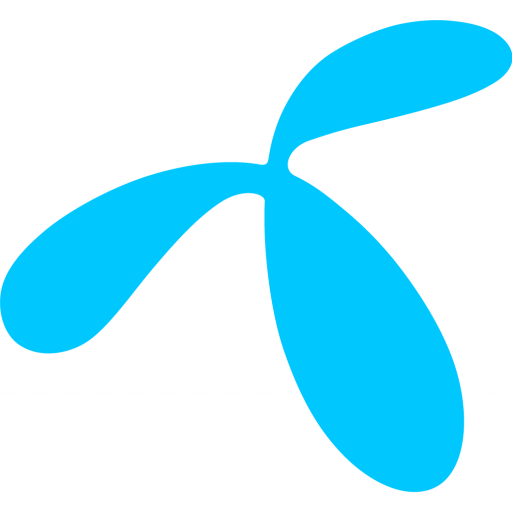2020年物联网趋势预测综述
回顾我们对2019年的预测以及目前的进展
在第一版物联网趋势预测报告中,我们对2019年及以后物联网将如何推动互联经济发展做出了5项预测。这些早期的趋势在今天仍然非常适用。首先,我们预测企业数据将在数据交易中占据主导地位。物联网中来自于联网的“物”的大量数据,使得许多公司开始探索通过向第三方出售数据来获利的机会。
我们预测,来自企业物联网的数据(如机器和传感器)将成为大规模数据交易的焦点,因为与消费类物联网的数据相比,这些数据所受的数据保护规定较少。
第二大趋势是数字化的价值将更快地被释放。较早踏上数字化之旅的企业已经从中获益,但往往创造了这样的一种技术格局:内部系统之间截然不同且交互较为复杂。我们预测,数字化领域的后来者将“跨越”先行者所经历的复杂性,能够以更低的成本、更快地开发和部署物联网解决方案。
第三大趋势——物联网连接将是数字产品创新的核心。一个功能完善的连接解决方案是产品性能的重要组成部分,也是推出数字产品和服务的关键。然而,目前企业往往是在推出产品后才考虑到为其赋予连接性。我们预测,为了创造新的数字化产品和体验,企业将从一开始就把连接技术的考虑融入到整个产品开发周期中。
2019年的第四大趋势是物联网连接将进一步推动电子商务的发展。在电子商务发展的推动下,物流行业正在经历着快速的变革。以物联网连接为中心,将所有利益相关者(例如供应商、承运人、仓库)连接起来的智能物流正在从高价值资产扩展到大规模部署。我们预测,结合了人工智能、机器人技术和传感器的连接技术将成为物流创新的主要动力。
第五大趋势是管理连接服务将变得更加重要。在消费和企业物联网领域,Wi-Fi作为一种连接技术已得到广泛应用,尤其当产品或服务面向价格敏感的细分市场时更是如此。然而,在有些情况下,产品需要高度的可靠性和安全性,例如智能锁或涉及服务级别协议(SLA)时(如视频监控安全服务)。对于越来越多的此类用例来说,管理连接服务(蜂窝或Wi-Fi)是一种更好的选择,正在成为主要的技术选择标准,而且这种解决方案还具备技术和商业优势。
迈入新十年之际,我们在新版预测报告中增加了对于未来的一项新预测。我们预测物联网将在应对气候变化中发挥关键作用。物联网不仅将推动互联经济的发展,而且将成为更具可持续性和负责任的互联经济的重要助推器。
物联网将在应对气候变化和遏制全球变暖中发挥关键作用
鉴于来自社会、客户和监管机构的压力越来越大,企业正在想方设法,在追求利润和减少环境足迹之间找到平衡。这两个目标一定相悖吗?本报告将探讨影响这些目标的各种因素,并强调物联网所发挥的关键作用。
众多企业已踏上数字化之旅,并实施了物联网解决方案,它们非常重视提高产品制造、运输、供应链和维护的效率并降低成本。所实现的成本节约往往来自于更优化地使用电力、燃料、水、棉花、铁、木材等生产资料。
这意味着,在以经济效益为目标的商业举措中,有一部分对可持续发展做出了积极贡献。
有哪些推动因素?
顾客越来越注重做出更符合道德、更具可持续性的选择,许多人愿意为这样的产品和服务支付更高费用。有时很难分辨哪种选择更具有可持续性。
因此,顾客也日益要求提高信息的透明度,了解关于所购买产品的更多信息,包括原材料、制造、运输以及对环境的总体影响。
本报告中讨论的另一个推动因素是,随着法规对企业提出新的要求,物联网在应对气候变化中发挥着越来越大的作用。现在的趋势是企业正在加紧努力,自愿承诺通过“碳中和”的方式使其企业战略与《巴黎协定》的目标保持一致。
世界各国政府正在全面实施针对排放、污染物和自然资源使用的更严格的立法。企业自愿设定宏伟目标以实现碳中和,这当然被视为推动变革的积极力量。虽然在法规的推动下,许多行业正在发生变革,但各国政府在减少温室气体排放方面做得还不够,已经落后于全球认可的《巴黎协定》的目标,即“将全球平均气温升幅控制在显著低于2°C的水平,并向将升温控制在1.5°C努力”。
将产生哪些影响?
物联网有望在减少人类环境足迹方面发挥非常重要的作用。未来几年,我们预计将产生以下这些影响。首先,可持续发展目标将成为许多商业物联网部署中不可或缺的一部分。环境可持续发展将不再仅仅是智能解决方案的副产品。物联网解决方案的设计在满足业务和技术要求的同时,将越来越多地以可持续性为其关键组成部分。
新一代技术通常更节能,因此对地球环境更为友好。
企业将利用物联网数据,为有环保意识的消费者和商家提供产品和服务。这意味着企业将收集物联网数据,并根据数据采取行动,以优化资源的使用,并满足环境法规的要求,例如,运输和海运业的排放法规更加严格,需要采取技术和运营措施。
许多公司还将领先一步——以可持续的产品和服务为基础,为有环保意识的消费者创造新的产品和服务。这些企业将可持续发展看作是一种竞争优势,而不是一种成本,他们将其作为品牌形象和产品设计的核心。
物联网如何助力增强产品生命周期的可持续性?
企业历来注重以最低的成本生产和销售尽可能多的产品,而较少关注产品的使用频率或使用完毕后如何处置。企业和消费者意识到,这种“获取-制造-使用后丢弃”的模式已经不再适合目前的现状。创新型企业开始将循环经济原则应用到产品的生命周期管理中。
这种模式以3R为基础:减少资源的消耗,尽可能地多次使用产品和零部件,并对原材料进行循环利用。
循环经济第一项原则,即减少自然资源的消耗旨在减少浪费,同时注重在设计和制造阶段改进工艺并减少浪费。在从产品设计到制造的整个过程中,物联网有助于增强产品的可持续性。这项原则也要求重新思考分销和配送,即提高物流运输效率。物联网已得到了广泛使用,联网车队是其中一个应用领域,有助于降低油耗,以及减少城市的拥堵、噪音和污染。
在配送过程中,不仅可以监测货物的位置,还可以监测其状态。
循环经济的第二项原则——产品再利用将重点放在优化使用、延长使用寿命以及共享产品上。由于燃烧化石燃料是造成二氧化碳排放的最主要因素之一,因此物联网能够产生最大影响的领域之一是通过减少能源消耗,使城市和建筑更具可持续性。
联网资产“即服务”模式也是不断发展的共享经济的核心,从电动代步车、自行车和汽车到园艺工具和虫害防治。由物联网解决方案推动的共享经济通过提高产品利用率和延长使用寿命,从而减少浪费,为循环经济做出了贡献。由于服务提供商保留了产品的所有权,因此在产品的使用寿命结束后,由服务提供商对其进行处置和回收利用的责任更为明确。
改进废弃物分类和收集是循环经济第三项原则——循环利用的部分工作,重点是收集和回收利用。一个有序且运作良好的回收和废弃物收集系统还可以鼓励人们更好地进行垃圾分类,这对于旨在实现废弃物再利用、再制造的循环经济来说是至关重要的。
在2020年物联网趋势预测报告中,我们通过一些用例介绍了企业如何将整个价值链连接起来:从获取原材料、制造、分销和配送、产品使用到收集和循环利用,同时还阐释了物联网如何在减排方面发挥不可或缺的重要作用。格兰富智能水泵即是其中一例。
结论
物联网有助于减少温室气体排放,实现更可持续的生活方式,在帮助应对气候变化方面具有巨大的潜力。在本报告中,我们借助一些范例展示了许多企业和各行各业的思想领袖们如何积极接纳物联网解决方案,以创造既有商业竞争力又更加环保的创新产品和服务。

